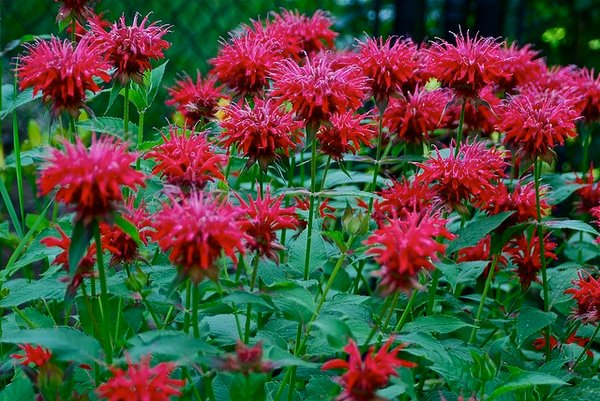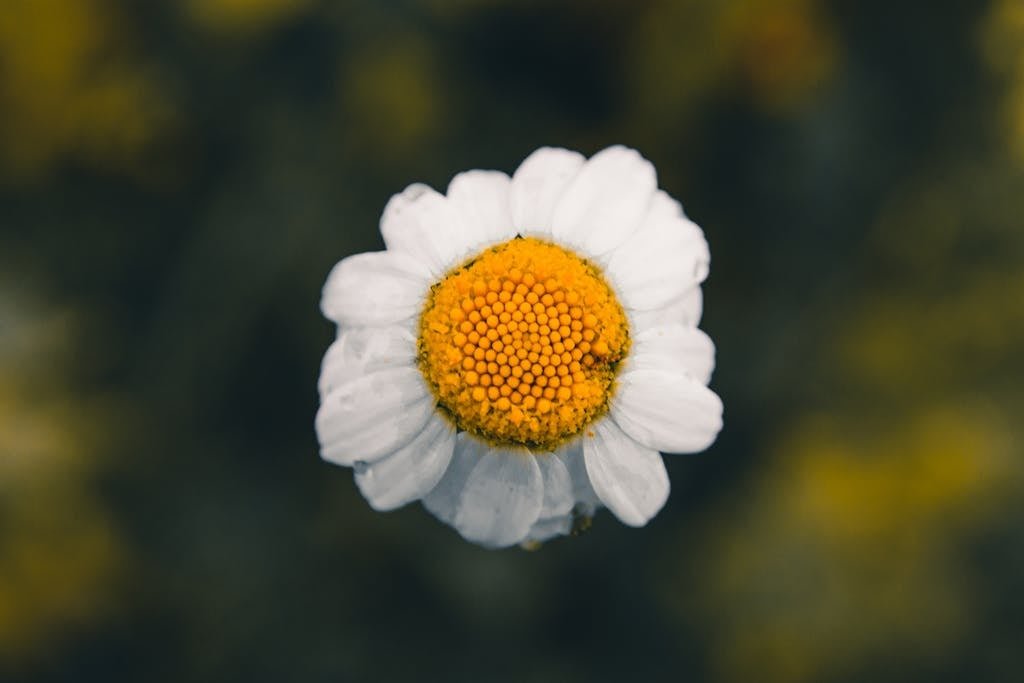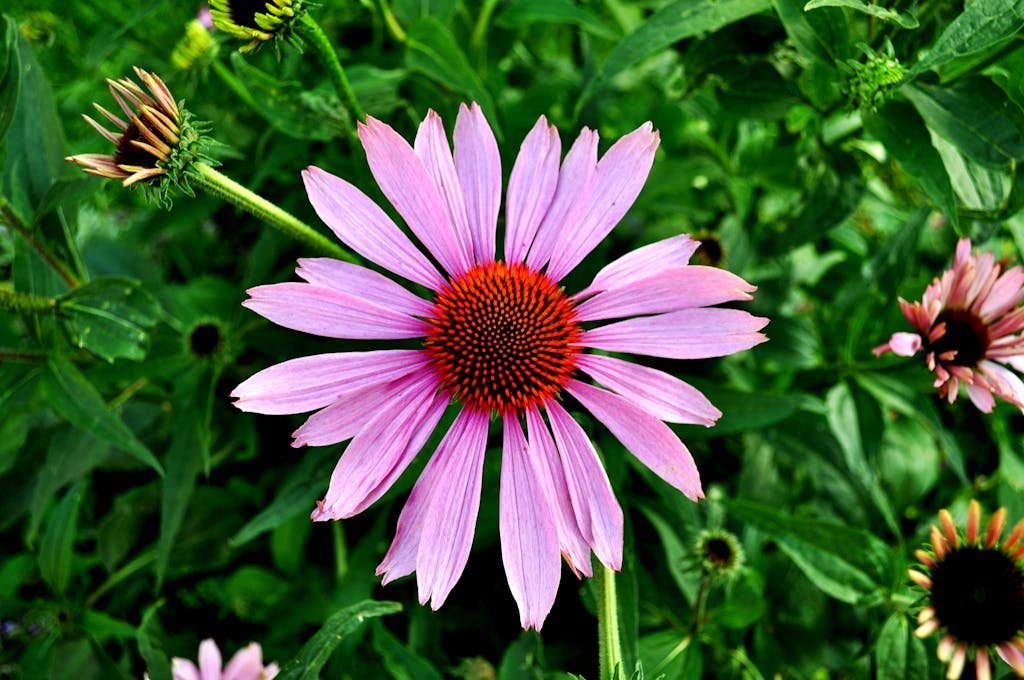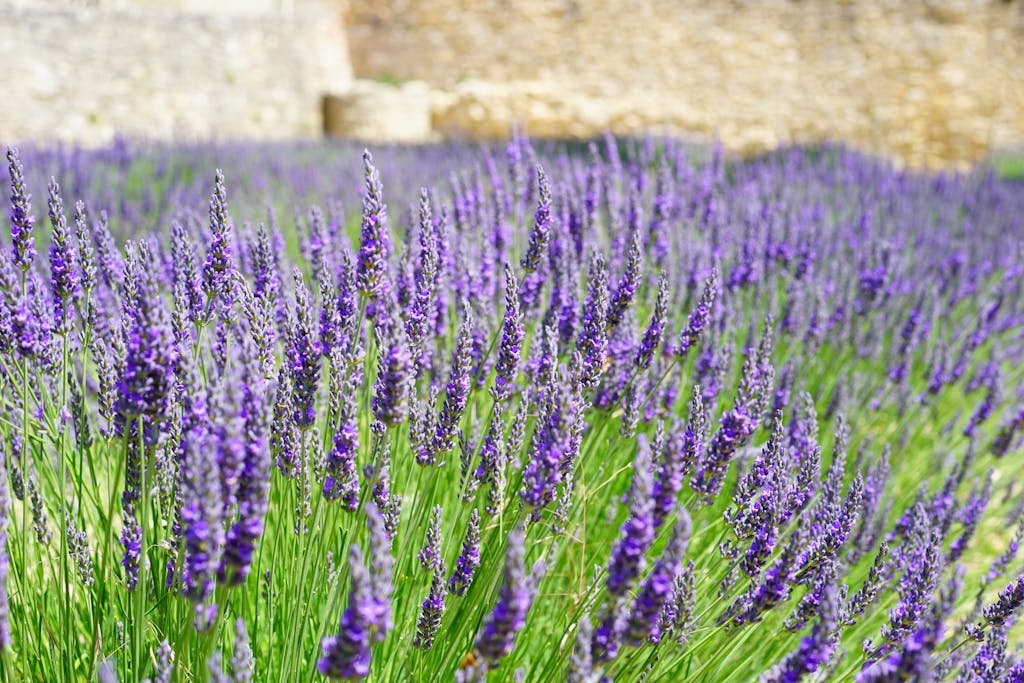Monarda – (Monarda didyma)
Monarda didyma, commonly known as bee balm, is a vibrant beacon in the garden, attracting a symphony of pollinators with its radiant red flowers. This perennial herb, a member of the mint family, not only boasts an eye-catching appearance but also carries a rich history and a plethora of uses that extend beyond its beauty.
Thriving in full sun and well-drained soil, bee balm’s aromatic leaves and striking blooms make it a favorite among gardeners and wildlife enthusiasts alike. Whether you’re looking to add a splash of color to your garden or exploring its culinary and medicinal applications, Monarda didyma offers a world of possibilities waiting to be discovered.
Key Takeaways
- Attracts a Symphony of Pollinators: Monarda didyma, with its vibrant red flowers, is a magnet for bees, butterflies, hummingbirds, and other pollinators, playing a crucial role in promoting biodiversity and supporting ecosystem health.
- Versatile Uses Beyond Beauty: Historically valued for its medicinal, culinary, and aromatic properties, bee balm serves multiple purposes, from natural remedies and herbal teas to adding flavor and color to dishes.
- Thrives in Specific Conditions: Preferring full sun to partial shade and moist, well-drained soil, bee balm is a perennial that grows best in USDA hardiness zones 4 through 9, requiring regular watering and pruning for optimal health and bloom.
- Supports Wildlife Beyond Pollinators: Besides attracting pollinators, Monarda didyma offers habitat and food for a range of wildlife, including small mammals and possibly butterfly larvae, enriching garden ecosystems.
- Historical and Cultural Significance: Bee balm’s rich history of use by Native Americans and early European settlers highlights its enduring value in herbal medicine and cultural practices.
- Ongoing Research and Interest: Studies continue to reveal Monarda didyma’s ecological significance and potential health benefits, maintaining its relevance in both the scientific and gardening communities.
History of Monarda didyma
Monarda didyma, commonly known as bee balm, boasts a rich history that intertwines with the cultural practices and medicinal knowledge of Indigenous peoples in North America long before European settlers arrived. Native Americans recognized the plant’s significant value, utilizing it in various ways. They brewed tea from its leaves for its medicinal properties to treat colds, headaches, and minor wounds, showcasing the herb’s versatility in traditional medicine.
As European settlers made their way to the New World, they quickly adopted bee balm for its aromatic qualities and potential health benefits. The plant’s striking red flowers, aside from their visual appeal, became a symbol of a burgeoning trade in medicinal plants between the New World and Europe. Research indicates that Monarda didyma’s early popularity among colonists was due in part to its antiseptic properties, which were valuable for treating infections and other ailments during a time when medical knowledge was limited and natural remedies were paramount.
The herb’s journey didn’t stop in medicinal cabinets; it found its way into kitchens as well. Bee balm leaves were used to add flavor to dishes and as a replacement for tea after the Boston Tea Party, reflecting its role in American history and culture. This adaptability in usage—from culinary to medicinal—highlights the plant’s integral role in the daily lives of people throughout history.
Today, the interest in Monarda didyma transcends its aesthetic value in gardens. Ongoing research explores its potential benefits in promoting pollinator health, especially bees, crucial for ecosystem balance and agriculture. This historical connection with both humans and wildlife underlines the enduring significance of bee balm in diverse fields ranging from horticulture and environmental conservation to historical studies, bridging past and present in its continued relevance.
Description and characteristics
Monarda didyma, commonly known as bee balm, proudly stands out in any garden with its distinctive bright red flowers and aromatic leaves. This perennial herb is part of the mint family, Lamiaceae, which is evident from its square stems and opposing leaf arrangement. Bee balm plants can reach up to 4 feet in height, thriving in USDA hardiness zones 4 through 9. They prefer full sun to partial shade and moist, well-drained soils.
The vibrant flowers of Monarda didyma bloom from early to late summer, attracting a host of pollinators including bees, butterflies, and hummingbirds. The tubular petals form a unique, crown-like shape, which has made this plant a favorite among gardeners and landscape designers. Beyond its aesthetic appeal, bee balm’s leaves emit a pleasant fragrance when crushed, reminiscent of bergamot orange, which lends itself to the plant’s alternative name, Oswego tea.
Research confirms the ecological significance of Monarda didyma in supporting biodiversity. A study published in the Journal of Pollination Ecology highlights its role as a valuable nectar source for pollinators during its blooming period. This characteristic is vital for promoting healthy ecosystems and ensuring the survival of many insect species.
| Zone | Height | Blooming Period | Sun Exposure | Soil Type |
|---|---|---|---|---|
| 4-9 | Up to 4 feet | Early to late summer | Full sun to partial shade | Moist, well-drained |
In terms of care, bee balm is relatively low-maintenance, requiring regular watering and occasional pruning to prevent powdery mildew. Gardeners are advised to space plants approximately 18 to 24 inches apart to ensure adequate air circulation. Deadheading, or the removal of spent flowers, can encourage a second bloom and extend the flowering season.
The adaptability and hardiness of Monarda didyma make it an excellent choice for those looking to add both beauty and functionality to their outdoor spaces. Its historical and medicinal significance, coupled with its ecological benefits, underscore its value beyond mere aesthetics. Whether for attracting pollinators, culinary uses, or its therapeutic properties, bee balm continues to be a cherished plant across various disciplines.
Cultivation and care
Successfully cultivating Monarda didyma, commonly known as bee balm, involves understanding its basic growth requirements and preferences. This perennial herb thrives in USDA hardiness zones 4 through 9, indicating its adaptability to a range of climatic conditions. Bee balm prefers full sun to partial shade and flourishes in moist, well-drained soils. Gardeners should aim to provide it with six to eight hours of sunlight daily, to encourage vibrant flowering and healthy growth.
When it comes to soil, bee balm is not overly fussy, but it does best in slightly acidic to neutral pH levels. Regular watering is essential, especially during dry spells, to keep the soil consistently moist. However, it’s important to avoid waterlogging, as this can lead to root rot. Mulching can help retain soil moisture and suppress weeds, contributing to healthier plant growth.
Pruning plays a crucial role in the care of bee balm. Deadheading, or the removal of spent flowers, can promote a second bloom and extend the flowering period. In the fall, cutting the plant back to the ground helps prevent the spread of powdery mildew, a common fungal disease that bee balm is susceptible to. Good air circulation around plants is also crucial in mitigating this issue.
Research has shown that Monarda didyma is more than just an appealing garden plant. Studies indicate its ecological importance in attracting pollinators, such as bees, butterflies, and hummingbirds, making it a valuable addition to biodiversity-friendly gardens. Furthermore, bee balm’s aromatic leaves and colorful flowers can enhance both culinary dishes and herbal remedies, showcasing its versatility beyond ornamental value.
Culinary uses
Monarda didyma, commonly known as bee balm, isn’t just a visual feast in gardens; it also offers a range of culinary applications that intrigue the palate. This herb’s bright flowers and aromatic leaves have historically found their place in various dishes and beverages, bringing both flavor and a dash of color.
The leaves of bee balm, when crushed or minced, release a citrusy fragrance, reminiscent of bergamot orange, which explains its alternative name, “wild bergamot.” They can be used fresh or dried to infuse teas, adding a subtle minty flavor with hints of oregano and citrus. Notably, bee balm tea is more than just a flavorful beverage. Research has suggested potential health benefits, including digestive aid and antimicrobial properties, making it a staple in traditional herbal medicine.
Moreover, the edible flowers of Monarda didyma, ranging in color from bright red to pink and purple, serve as an attractive garnish for salads, desserts, and cocktails. Their vibrant hues and slightly spicy taste can elevate the visual and taste experience of many dishes. Culinary enthusiasts often use them to add a unique twist to homemade jams, jellies, and syrups, imbuing these condiments with a distinct flavor profile that’s hard to replicate with other herbs.
Incorporating bee balm into culinary creations not only offers a unique flavor but also taps into the rich history of indigenous culinary practices. Native American tribes have utilized bee balm in their cooking for centuries, highlighting its significance beyond ornamental gardening. Its adaptability in various dishes underscores the versatility of Monarda didyma as more than just a garden favorite but also a cherished culinary ingredient.
As with any herb, it’s crucial to source bee balm from gardens free of pesticides and other chemicals to ensure it’s safe for consumption. Whether used in teas, garnishes, or entrées, bee balm brings an unexpected twist to the table, promising a culinary adventure rooted in both flavor and tradition.
Medicinal properties
Monarda didyma, commonly known as bee balm, has long been recognized for its Medicinal properties. The plant’s leaves and flowers contain thymol, an essential oil that has powerful antiseptic and antibacterial qualities. This makes bee balm a valuable plant in the natural health community, where it’s often used in herbal remedies and treatments.
Research on bee balm has supported its traditional uses, with studies highlighting its effectiveness in treating various ailments. For example, the essential oils extracted from bee balm have been found to be effective against certain strains of bacteria and fungi, showcasing its potential as a natural antimicrobial agent.
- Antimicrobial Properties
A study published in the Journal of Essential Oil Research demonstrated that Monarda didyma oil exhibited strong antibacterial activity against a range of pathogenic bacteria. This research underscores the herb’s potential in fighting infections and supporting the body’s immune response.
- Digestive Health
Bee balm has also been said to soothe digestive issues. Its antispasmodic properties can help alleviate cramps and bloating, making it a go-to herb for natural digestive aid formulations.
- Respiratory Relief
Traditionally, bee balm has been made into teas and infusions to treat respiratory conditions. Its antiseptic properties can help clear congestion and soothe sore throats, making it a popular choice during cold and flu season.
While bee balm has proven to offer numerous health benefits, it’s essential for individuals to consult healthcare professionals before integrating it into their medicinal regimen. Its interaction with other medications and the correct dosages for specific conditions should be carefully considered to ensure safety and efficacy. Bee balm continues to be a subject of interest in the scientific community, with ongoing research exploring its full potential in herbal medicine.
Wildlife attraction
Monarda didyma, famously known as bee balm, holds a prized place not just in gardens for its vibrant flowers and aromatic leaves but also as a major attraction for a wide array of wildlife. It’s fascinating to note how bee balm acts as a natural magnet for pollinators, playing a crucial role in the survival of many species and the promotion of biodiversity.
Among the most frequent visitors to Monarda didyma are bees, including both wild species and honeybees. Their attraction to bee balm isn’t coincidental; the plant’s structure allows for easy access to nectar, providing a vital food source for these pollinators. Hummingbirds, too, are drawn to bee balm’s tubular flowers, with their bright red hues acting as beacons to these fast-flying birds. The relationship is symbiotic, as the hummingbirds’ feeding process helps in the pollination of the plants, facilitating garden health and growth.
Butterflies, such as monarchs and swallowtails, also find sanctuary and sustenance in bee balm gardens. Their presence adds an extra layer of beauty to the already picturesque setting that Monarda didyma creates. What’s notably interesting is research indicating the dual role of bee balm not only as a food source but also as a potential habitat for butterfly larvae, showcasing the plant’s extensive ecological value.
The attraction of Monarda didyma extends beyond insects and birds. Small mammals, including squirrels and rabbits, are known to visit gardens housing bee balm, though they are more interested in the shelter the dense foliage provides than in the nectar or pollen.
Through careful cultivation, gardeners can enhance their environments to become hubs of wildlife activity. Planting Monarda didyma in groups rather than as solitary specimens increases the likelihood of attracting these pollinators. Additionally, the maintenance of healthy bee balm plants—through practices like regular watering, pruning, and ensuring adequate sunlight—helps in sustaining the visiting wildlife, further contributing to the ecological benefits of this outstanding plant.
Caring for Monarda didyma, or bee balm, goes beyond just adding beauty to your garden. It’s a commitment to enhancing biodiversity and supporting the ecosystem. By ensuring it receives ample sunlight, regular watering, and proper pruning, you’re not only nurturing a plant but also creating a haven for pollinators and wildlife. The culinary uses of bee balm add another layer of value, making it a versatile addition to any g
arden. Planting bee balm in groups can magnify its ecological benefits, making your garden a focal point for bees, hummingbirds, butterflies, and even small mammals. Embrace the multifaceted advantages of bee balm and watch as your garden becomes a vibrant ecosystem teeming with life.




